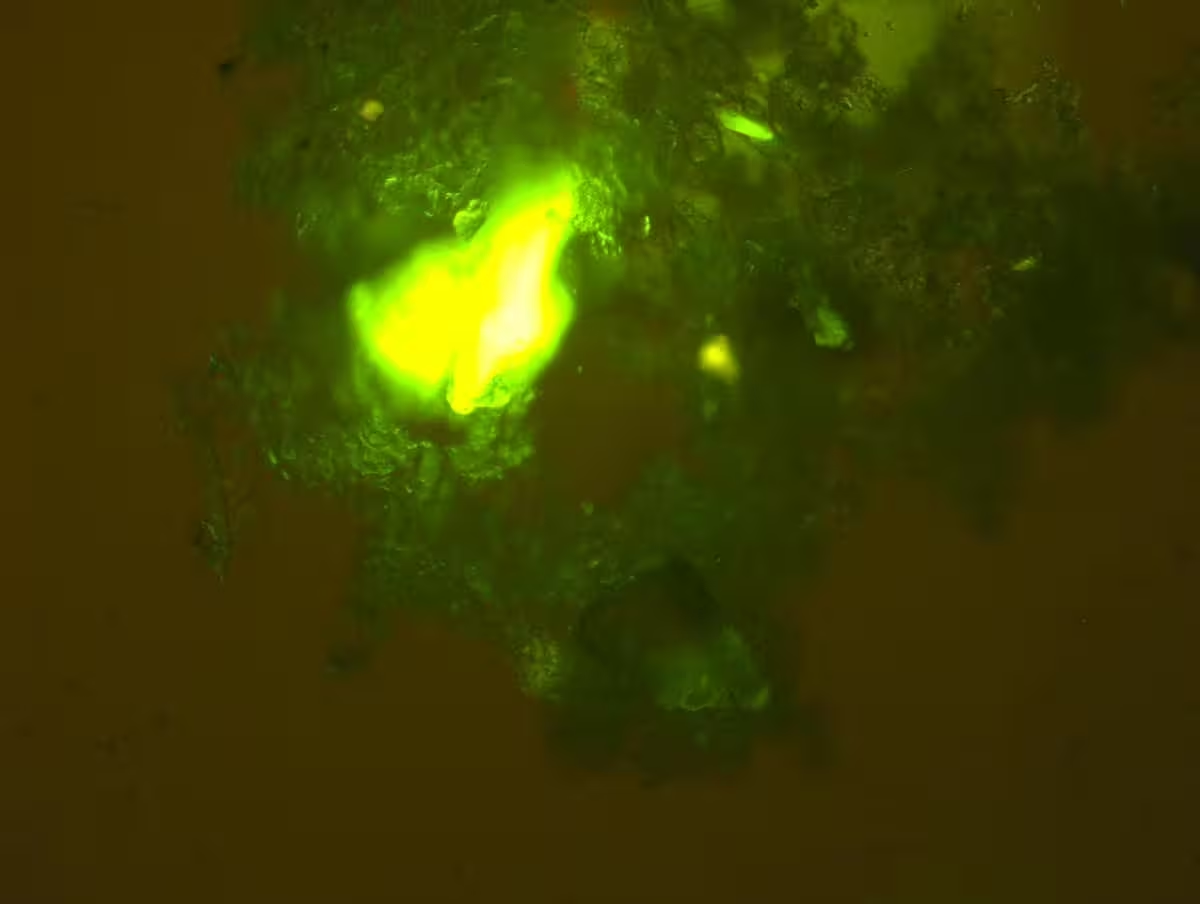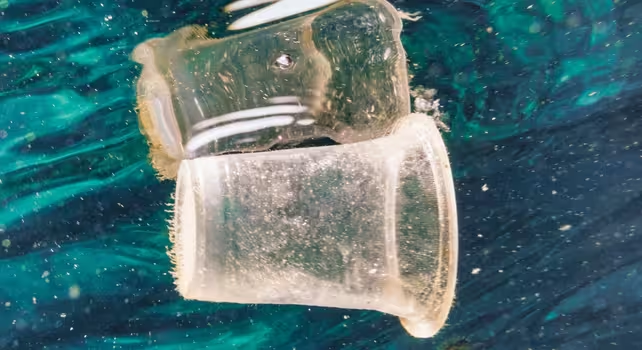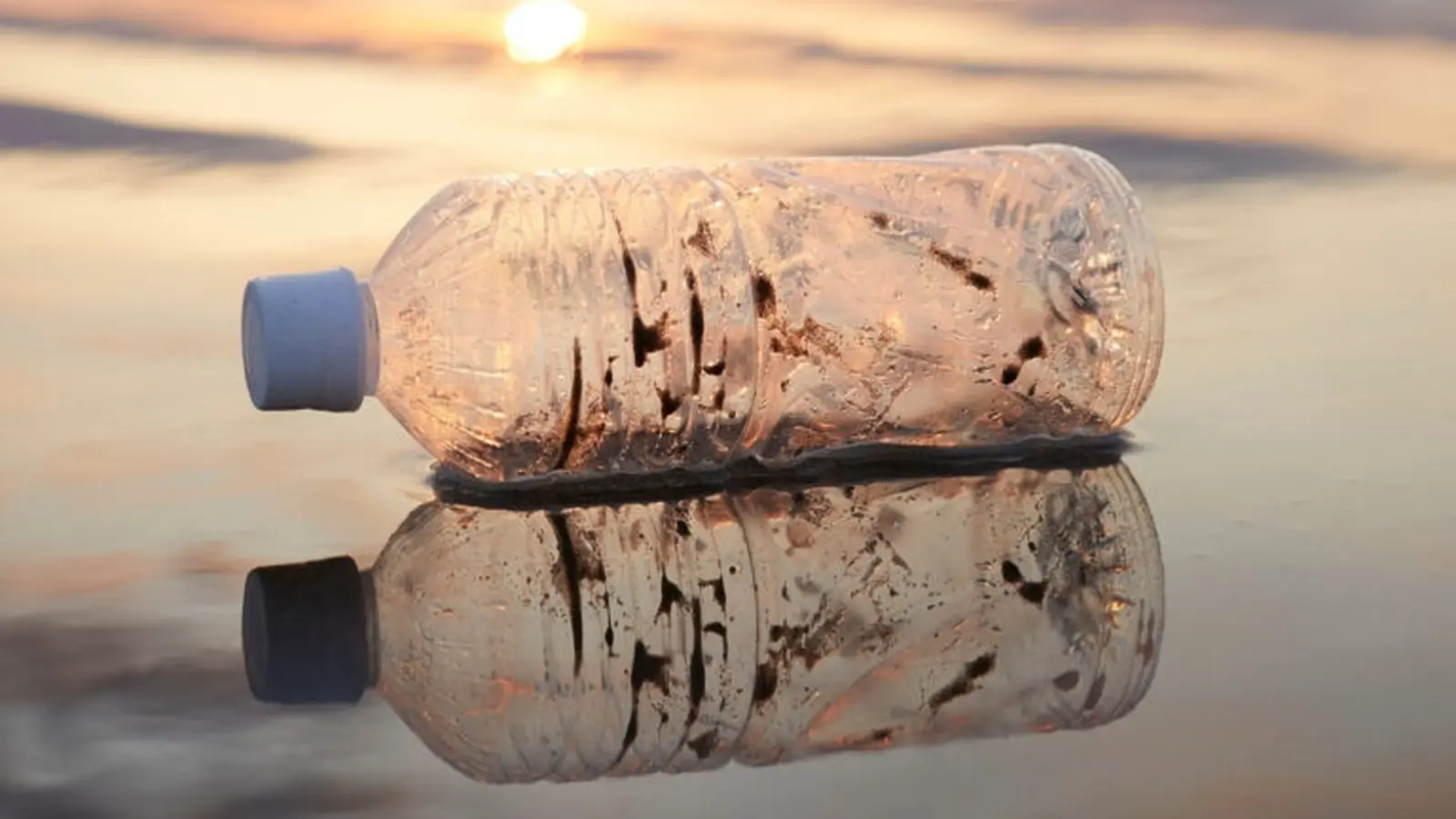6 Minutes
When you picture plastic in the ocean, bottles and bags floating on the surface probably come to mind. But that visible litter is only part of the story. New research shows buoyant plastic fragments can persist at the sea surface for decades while continuously shedding microplastics that slowly travel down through the water column, hitching rides on the ocean’s natural particles.
From surface litter to microscopic hitchhikers
Large, buoyant items such as food wrappers and fragments of fishing gear can float for years. Sunlight, waves and biological growth on the plastic—biofilms made of microbes and algae—gradually weaken and fracture these items into ever-smaller pieces. But that breakdown is painstakingly slow.

The fluorescence-labelled polyethene microplastic (about 0.1mm in size) is shown embedded in marine snow. (Nan Wu, CC BY-NC-ND)
Our understanding of what happens next has improved thanks to a new computer model that links plastic degradation with ocean processes such as currents and the settling of suspended organic particles, commonly called "marine snow." Rather than simply assuming microplastics reach a critical size and drop out of the surface layer, the model simulates fragmentation, transport and repeated interactions with sinking organic aggregates.
How marine snow turns plastics into a conveyor belt
Marine snow is the ocean’s slow snowfall: a continuous rain of organic flakes made from dead plankton, fecal pellets and other sticky detritus. These aggregates clump and sink, pulling heat, carbon—and anything they capture—down into the deep sea. Microplastics that reach the sizes and surface characteristics conducive to sticking can attach to marine snow and be transported out of the surface layer.
Attachment and release: a long, looping journey
The model shows microplastics don’t simply stick once and sink straight to the seafloor. Instead, particles can attach and detach multiple times as they cycle through the upper ocean. Currents, turbulence and changing biofilms cause repeated episodes of capture and release, extending the time microplastics spend in transit. In practical terms, plastics that entered the ocean decades ago are still fragmenting today and producing new microplastics.

The breakdown of plastics in the ocean is slow
Solving the “missing plastic” puzzle
Scientists long observed a mismatch: the volume of plastic known to enter the ocean far exceeds what researchers can find floating at the surface. Where did the rest go? The combined experimental and modelling approach explains much of that discrepancy. Rather than vanishing without trace, a significant portion of buoyant plastics gradually transforms into microplastics that are intermittently carried downward by marine snow and ocean dynamics. Over a century, only a fraction of the initial buoyant material remains at the surface.
That movement is not benign. The ocean’s biological pump—its mechanism for exporting carbon from surface waters to the deep sea—could be disrupted if microplastics become pervasive within marine snow. Excess synthetic particles could change the density, stickiness and sinking speed of aggregates, altering how effectively the ocean stores carbon and recycles nutrients.
Why this matters for policy and cleanup
Microplastic pollution is not a short-term problem you can solve with a single cleanup campaign. Even if all plastic leakage stopped today, floating fragments would persist and generate microplastics for decades to come. That reality demands systemic solutions: reducing plastic production, redesigning materials for durability and recyclability, improving waste management, and shaping policy that addresses the full lifecycle of plastics.
Beach cleanups and ocean skimmers have a role—especially for large debris—but they are not sufficient to address the slow, long-term conversion of buoyant plastics into deep-sea microplastics. Understanding transport pathways such as marine snow helps target interventions and anticipate ecosystem impacts.
Expert Insight
"This research connects the dots between fragmentation, biological aggregation and ocean transport," says Dr. Lena Morales, a marine biogeochemist at the University of Lisbon. "It reveals that the sea surface is only one chapter in a much longer story. Microplastics are part of a dynamic cycle that reaches the deep ocean and can persist for generations—so solutions must be multi-decade and systemic."
Scientific context and future research
The model builds on laboratory experiments that quantify how small plastics interact with suspended organic particles, then embeds those processes in realistic ocean physics. Future work will refine how different polymer types, shapes and biofilms affect attachment rates, and use field observations to validate long-term transport predictions. There are also important cross-disciplinary questions: how do microplastics in marine snow influence microbial communities, nutrient cycling and carbon sequestration at basin scales?
Recognizing plastics as part of the ocean’s particulate flux reframes both scientific priorities and public messaging. Where once the focus was finding visible trash on the surface, the emphasis must shift to tracking the lifecycle of materials, from manufacture to deep-sea deposition, and preventing harmful outcomes before they become embedded in marine ecosystems.
The ocean connects everything: what floats today will one day sink, fragment, and reappear in new forms. Our task is to make sure that what we leave behind is less damaging than what we have already set adrift.
Source: sciencealert
Comments
DaNix
Is this based on real ocean data or mostly models? curious but skeptical, bc models can miss stuff. any field surveys or samples to back it up...
bioNix
wow, didn't expect floating plastic to keep spawning microtrash for decades. feels like we tossed a slow time bomb into the sea, ugh. what do we even do now?


Leave a Comment